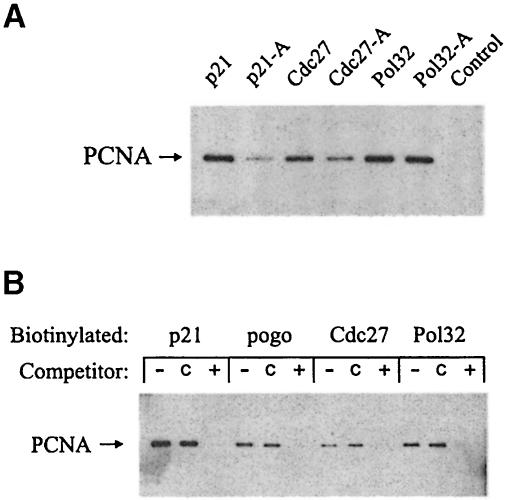Fig. 5. Peptide–Pcn1 interactions. (A) Peptides were conjugated to streptavidin–agarose beads and incubated with S.pombe cell extracts. Following recovery and extensive washing of the beads, the bound PCNA was analysed by SDS–PAGE followed by Western blot analysis with the monoclonal anti-PCNA antibody PC10. The peptides used are described in Materials and methods, and represent previously described PCNA binding peptides from human p21Cip1 (p21), and C–terminal 20 amino acid sequences derived from Cdc27 (Cdc27) and Pol32 (Pol32). In each case, peptides were also tested in which the conserved glutamine was substituted with alanine (peptide-A). A peptide of unrelated sequence was used as a control for non-specific binding. (B) The ability of immobilized peptides to bind to PCNA was tested in the presence of either the p21Cip1-derived peptide (+), an unrelated control peptide (c) or the solvent DMSO (–). These were added to diluted S.pombe cell extracts before incubation with the immobilized, biotinylated peptides. The competitor p21Cip1 peptide is known to compete with the peptide pogo for binding to PCNA (Warbrick et al., 1998).

An official website of the United States government
Here's how you know
Official websites use .gov
A
.gov website belongs to an official
government organization in the United States.
Secure .gov websites use HTTPS
A lock (
) or https:// means you've safely
connected to the .gov website. Share sensitive
information only on official, secure websites.
